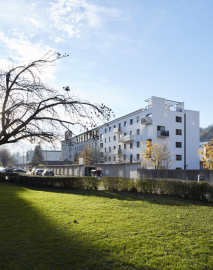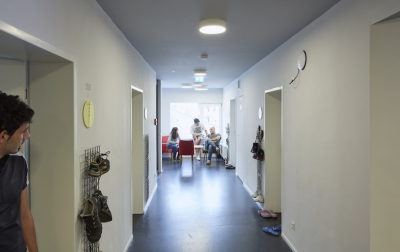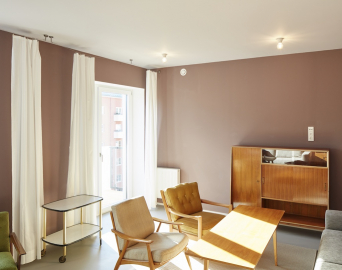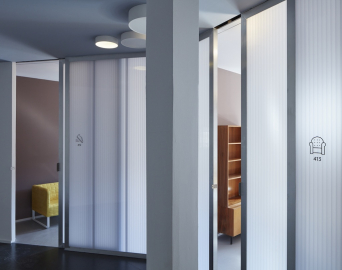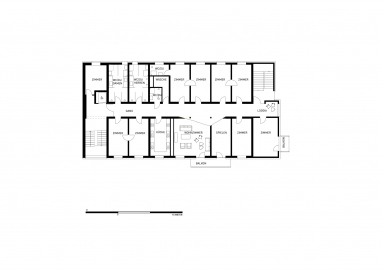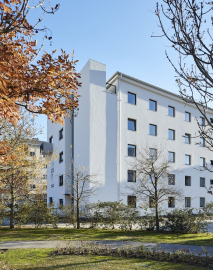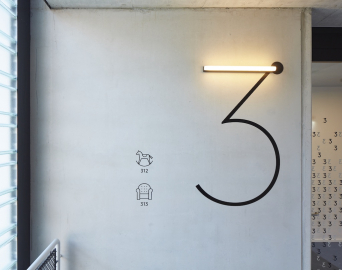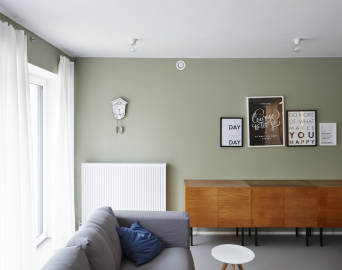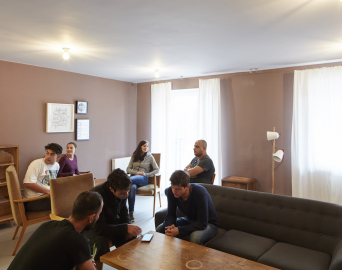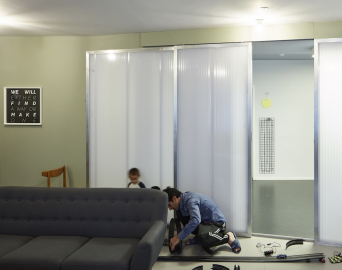HERberge Refugee Home
Herberge - a temporary home for people, who lost their homes
A female boarding school built by the Congregation of the Sisters of Charity next to their main convent was converted to a residence for 131 people who are far from home. The building was renovated and a staircase extended. The fassade, which looked like a military barrack was opened up with more windows and balconys added. That was to lighten up the original strict character. With regard to the external apearance, the residential function should be readable as such. Under no circumstances should it give the impression of an „emergeny shelter“. To get the most from the building budget, the architects spoke with companies about cost effective products. The final surfaces were not based on principal design wishes. Communication and interaction between involved parties relating to available building materials led to the final design.
On 5 floors live communities of 25-27 people. Each community shares kitchen and sanitary rooms. The heart of each floor is the livingroom. The original layout of the building defined the room sizes. On principal the rooms are for 3 people. Should a family unit be bigger, the neighbouring room can be combined. In the new part of the building there are 4 people rooms with balconies. The old corridors with long parallel walls were expressing the original character of a strict institution. In the middle of the corridors the walls were softened with plastic glazing and sliding doors. The quality of the community living is based on the diversity of the communal rooms.
The HERberge is sometimes called „Luxury HERberge“. The luxury of the HERberge does not exist in material terms. It is, compared to other refugee centers, an architecturally optimized quality, to create, with less financial resources, a basis for a harmoniously community of residents and neighbors.
The building costs were covered by a loan from the convent and should be payed back over a period of 25 years by renting out the residence to the County of Tirol. The furniture was organised by the architects using local sponsorship. It was designed, so that local carpenters could make „Ikea“ kits for „do it yourself“ assembly by volunteers. After annonuncements in the media and churchs we deployed, during one weekend, more than 200 volunteer helpers on the building site. Spanning all social classes and ages, people carried, built, drilled, screwed and cleaned entusiastically. Through the giving of time and manpower the HERberge got its last, useable and emotional components. This unique act in the building process makes the HERberge a wonderfull example of social interaction. From the large number of volunteers, who were working together during the one weekend, a circle of „Friends of the HERberge“ developed.

